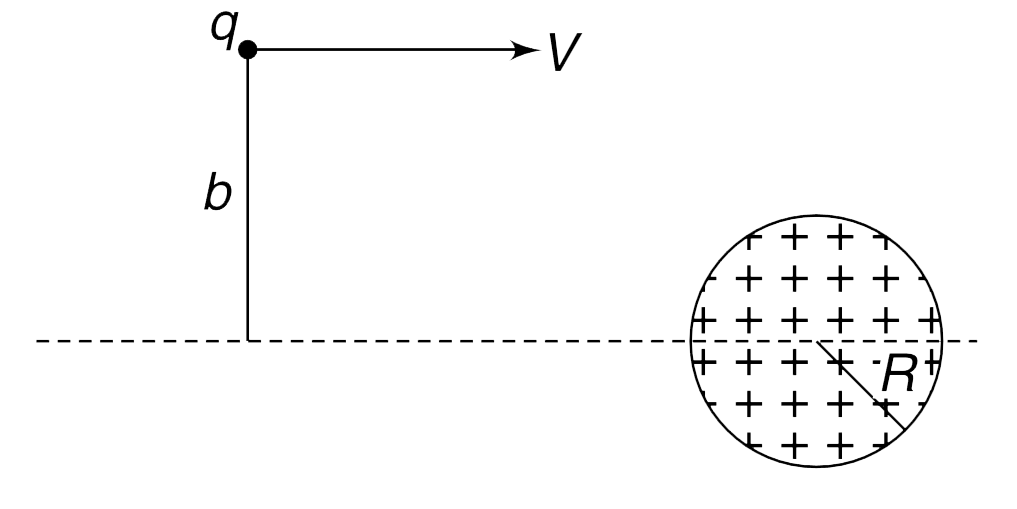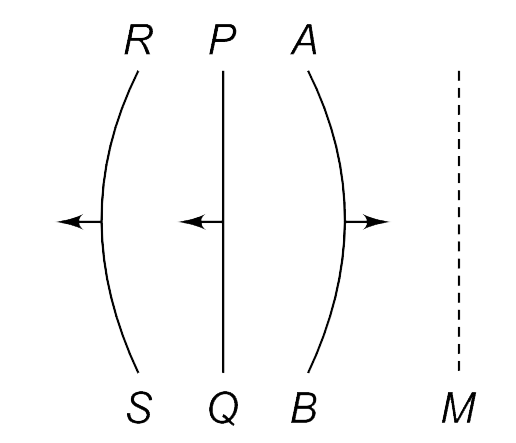Following reactions are known as inverse beta decay
p+→v→n+e+
n+v→p+e−
These reactions have extremely low probabilities. Because of this, neutrinos and antineutrinos are able to pass through vast amount of matter without any interaction. In an experiment to detect neutrinos, large number of neutrinos coming out from beta decays of a radioactive material were made to pass through a tank of water, containing a cadmium compound in solution, which provided the protons to interact with antineutrinos, which provided the protons to interact with antineutrinos. Immediately after a proton absorbed a neutrino to yield a positron and a neutron, the positron encountered an electron and both got annihilated. the gamma ray detectors surrounding the tanks responded to the resulting photons. This confirmed that the above reaction has taken place.
(a) How many gamma ray photons are produced when a electron annihilates with a positron? What is energy of each photon? Take the mass of an electron to be 0.00055 u.
(b) The neutron produced in the above reaction was captured by .112Cd to form .113Cd. The atomic masses of these two isotopes of cadmium are are 111.9028u and 112.9044u respectively. mass of a neutron is 1.0087u. find the Q value of this reaction. Assume half of this energy is excitation energ of .113Cd. if the nucleus de-excites by emitting a gamma ray photon find its wavelenght.
The correct Answer is:(a) 0.51MeV (b) 6.60MeV,0.004 ∘A
Step by step video, text & image solution for Following reactions are known as inverse beta decay p+vecvrarrn+e^(+) n+vrarrp+e^(-) These reactions have extremely low probabilities. Because of this, neutrinos and antineutrinos are able to pass through vast amount of matter without any interaction. In an experiment to detect neutrinos, large number of neutrinos coming out from beta decays of a radioactive material were made to pass through a tank of water, containing a cadmium compound in solution, which provided the protons to interact with antineutrinos, which provided the protons to interact with antineutrinos. Immediately after a proton absorbed a neutrino to yield a positron and a neutron, the positron encountered an electron and both got annihilated. the gamma ray detectors surrounding the tanks responded to the resulting photons. This confirmed that the above reaction has taken place. (a) How many gamma ray photons are produced when a electron annihilates with a positron? What is energy of each photon? Take the mass of an electron to be 0.00055 u. (b) The neutron produced in the above reaction was captured by .^(112)Cd to form .^(113)Cd. The atomic masses of these two isotopes of cadmium are are 111.9028u and 112.9044u respectively. mass of a neutron is 1.0087u. find the Q value of this reaction. Assume half of this energy is excitation energ of .^(113)Cd. if the nucleus de-excites by emitting a gamma ray photon find its wavelenght. by Physics experts to help you in doubts & scoring excellent marks in Class 12 exams.
Updated on:21/07/2023Topper's Solved these Questions
Similar Questions
There is a fixed sphere of radius R having positive charge Q uniformly spread in its volume. A small particle having mass m and negative charge (–q) moves with speed V when it is far away from the sphere. The impact parameter (i.e., distance between the centre of the sphere and line of initial velocity of the particle) is b. As the particle passes by the sphere, its path gets deflected due to electrostatics interaction with the sphere.
(a) Assuming that the charge on the particle does not cause any effect on distribution of charge on the sphere, calculate the minimum impact parameter b0 that allows the particle to miss the sphere. Write the value of b0 in term of R for the case
12mV2=100.(kQqR)
(b) Now assume that the positively charged sphere moves with speed V through a space which is filled with small particles of mass m and charge – q. The small particles are at rest and their number density is n [i.e., number of particles per unit volume of space is n].
The particles hit the sphere and stick to it. Calculate the rate at which the sphere starts losing its positive charge dQdt. Express your answer in terms of b0

View SolutionIn the figure shown M represents a mirror. AB is an incident wavefront. Which type of mirror is M if the reflected wave front

(a)PQ (b)RS
View SolutionWhy is it found experimentally difficult to detect neutrinos in nuclear beta -decay?
View SolutionIn β−1 decay, a (A) neutron coverts into a proton emitting antineutrino (B) neutron coverts into a proton emitting neutrino (C) proton coverts into a neutron emitting antineutrino (D) proton coverts into a neutron emitting neutrino
View SolutionAssertion:The detection of neutrinos is extremely difficult . Reason : Neutrinos interact only very weakly with matter.
View SolutionWhy is it found experimentally difficult to detect neutrinos in nuclear β-decay ?
View SolutionBy neutrino hypothesis which conservation law for β− decay can be explained
View Solutionβ क्षय को समझाइये। β क्षय में न्यूट्रिनो परिकल्पना की विवेचना कीजिये ।
View SolutionPauli suggested the emission of neutrino during β+ decay to explain
View SolutionDiscuss the properties of neutrino and its role in beta decay.
View SolutionDiscuss the properties of neutrino and its role in beta decay.
View SolutionWhy is it found experimentally difficult to detect neutrinos in nuclear beta -decay process ?
View SolutionWhy is it found experimentally difficult to detect neutrinos in nuclear β-decay?
View SolutionIn beta^(-1) decay, a (A) neutron coverts into a proton emitting antineutrino (B) neutron coverts into a proton emitting neutrino (C) proton coverts into a neutron emitting antineutrino (D) proton coverts into a neutron emitting neutrino
View SolutionAssertion:The detection of neutrinos is extremely difficult . Reason : Neutrinos interact only very weakly with matter.
View Solution
